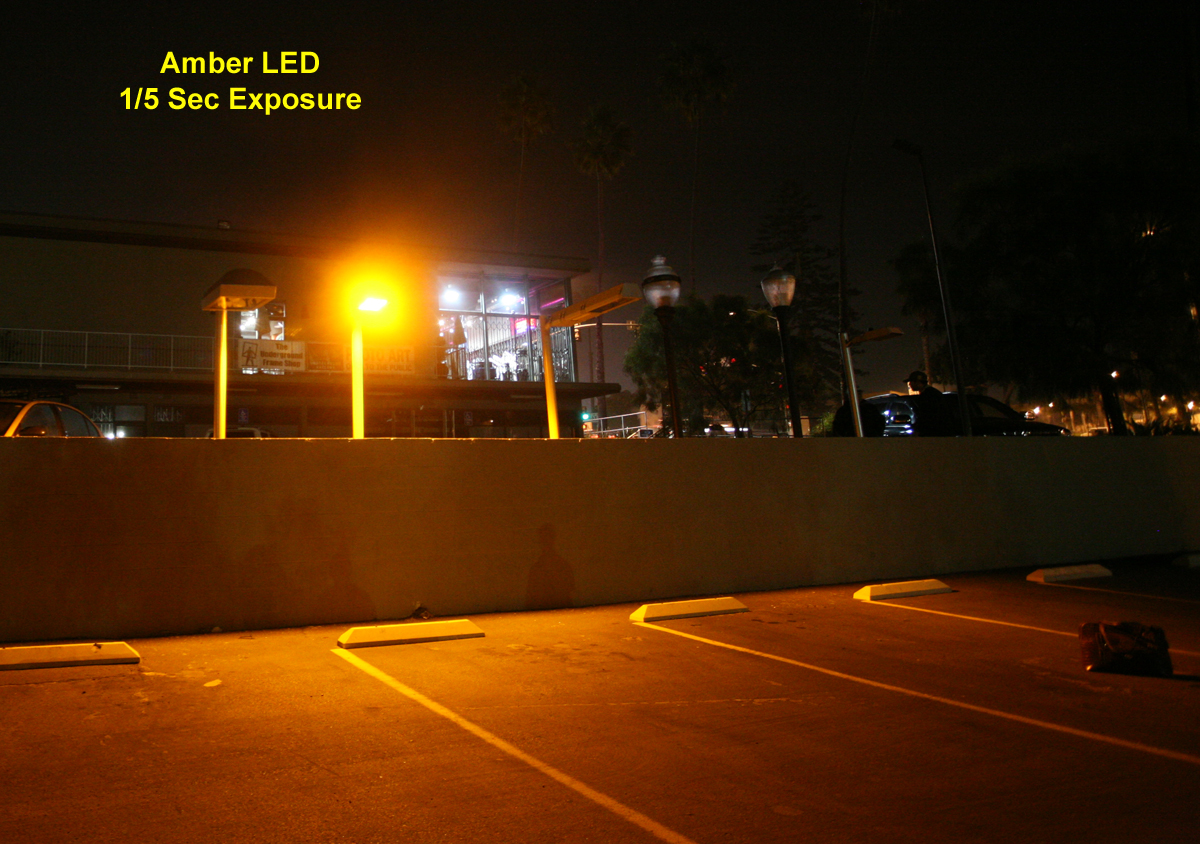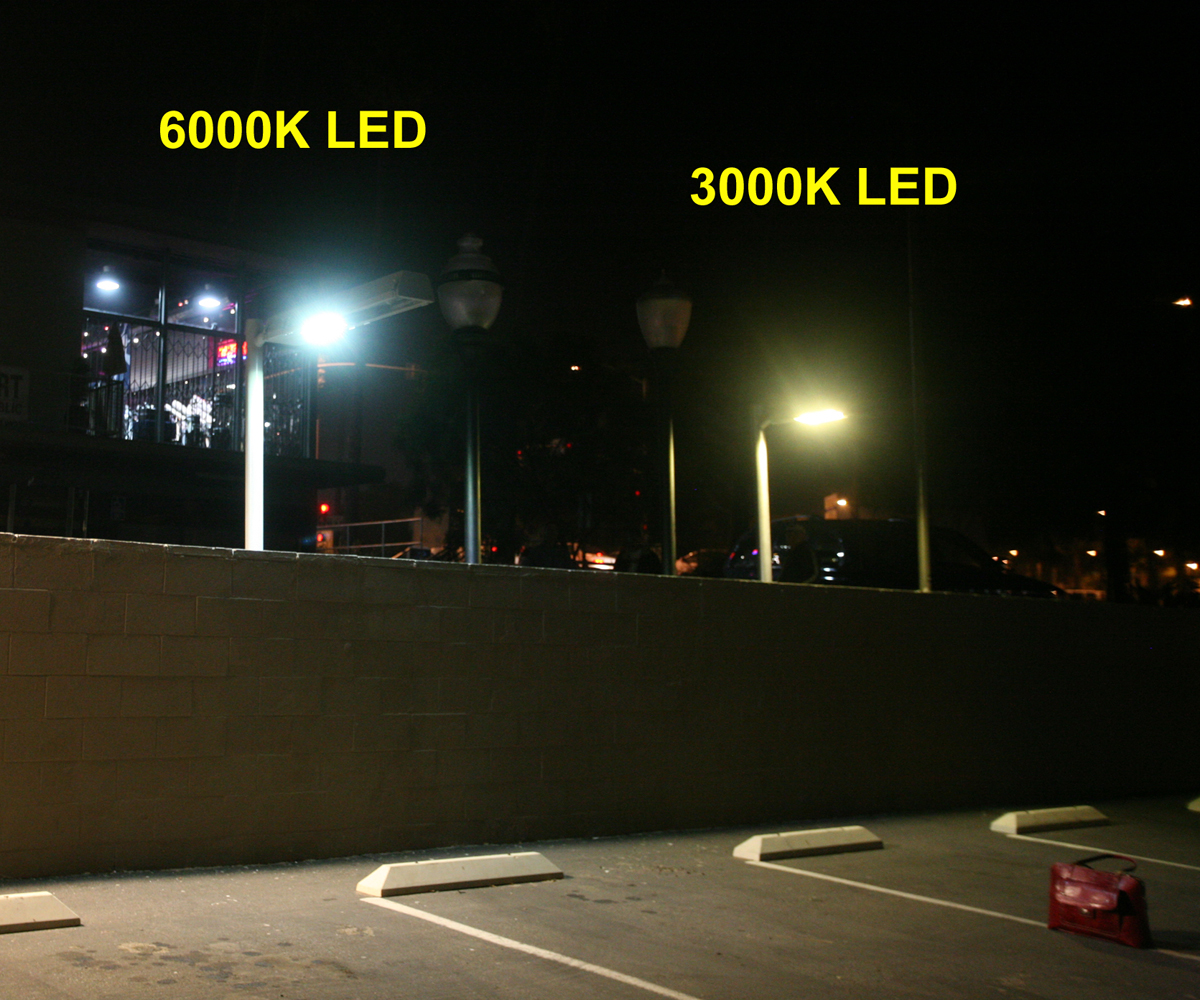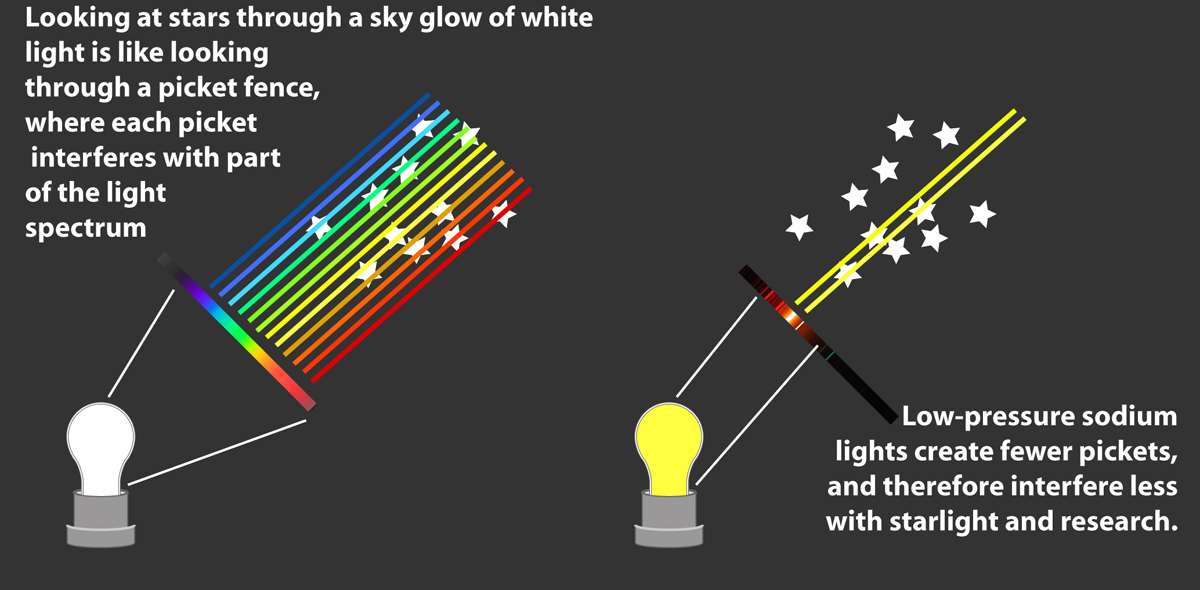Recently I had the opportunity to attend a demonstration of streetlights by Visionaire Lighting. They showed off a variety of products including an amber LED streetlight.
 As you can see the light from the amber LED looks a lot like the light from a low-pressure sodium light. Looks can be deceiving The key to understanding how such a lamp might affect astronomy is to have a more detailed look at the mix of colors that it is composed of. This is done by breaking the light into its component colors - its spectrum. Here is what the spectrum looks like for the amber LED:
As you can see the light from the amber LED looks a lot like the light from a low-pressure sodium light. Looks can be deceiving The key to understanding how such a lamp might affect astronomy is to have a more detailed look at the mix of colors that it is composed of. This is done by breaking the light into its component colors - its spectrum. Here is what the spectrum looks like for the amber LED: The light source is on the right and the spectrum is on the left. Compare the spectrum of the amber LED with a white LED streetlight (below):
The light source is on the right and the spectrum is on the left. Compare the spectrum of the amber LED with a white LED streetlight (below):
The white light offers up a full rainbow of colors (one of the reasons some people like it so much), yet it presents some problems for astronomy. Partly, it is rich in blue light which contributes to Rayleigh scattering, the phenomenon that makes the sky blue in the daytime. Blue light from streetlights disproportionally makes the sky brighter at night too.
One way to limit the amount of blue in the light is to use a narrow band light source such as low-pressure sodium or perhaps the amber LED. Another way that is not as effective for astronomy is to use a light of a low color temperature. Have a look at the two LED lights below and you'll notice that the higher color temperature lamp on the left looks blue and the lower temperature one on the right looks yellow.

The yellowish light on the right is made up of a different mix of light. It has less blue in it. While this is not as attractive astronomically as a narrow-band light source, the lower color temperature lamp will produce less skyglow than the higher temperature one (if all other things like level of illumination and light fixtures are equal).
But even limiting the color temperature does not help enough to make a streetlight attractive to astronomers. A lower color temperature light source still has a broad range of colors that fills up the spectrum. This full spectrum is a problem because it doesn't give astronomers any "window" to look through. The graphic below gives an idea of the concept:
 Credit: Bright Stars Wildomar
Credit: Bright Stars WildomarSo what is the point of all this? The observatory's position on outdoor lighting is still the same.
Cities, businesses and homeowners should:
Anyone that follows the first three points will save money and help to preserve dark skies. To the final point it may be time to modify it to read "Use low-pressure sodium or other monochromatic lights to the greatest degree possible." We may eventually have streetlights that can mimic the astronomical advantages of low-pressure sodium lights. Visionaire's amber LED is the only one that I have had the chance to see in person. There are other companies and other ideas that might prove to be good choices for astronomy.
Thanks to Visionaire for showing off some of their products (more later) to the San Diego chapter of the International Dark-sky Association and to Oceanside Photo & Telescope for hosting the lighting demonstration in their parking lot.



2 comments:
Hi Scott,
As usual, a fine topic on this great blog.
I'll be adding this to my list of links I share with local planners.
Thanks for the illustration credit on the LPS picket fence diagram. I'd like your readers to know that I'm eager to create more light-pollution informative illustrations and will take requests and 2) the LPS one here was your idea; I drew the analogy you described.
John
Scott,
I'm trying to figure out if this company puts their amber LED into an acorn-top post light, the kind that new cities are enamoured of to recreate that historical mood.
Do you know? I found their spec's showing MH, PS, and HPS, but I'm not sure what PS means (Pulse Start?)
jg
Post a Comment